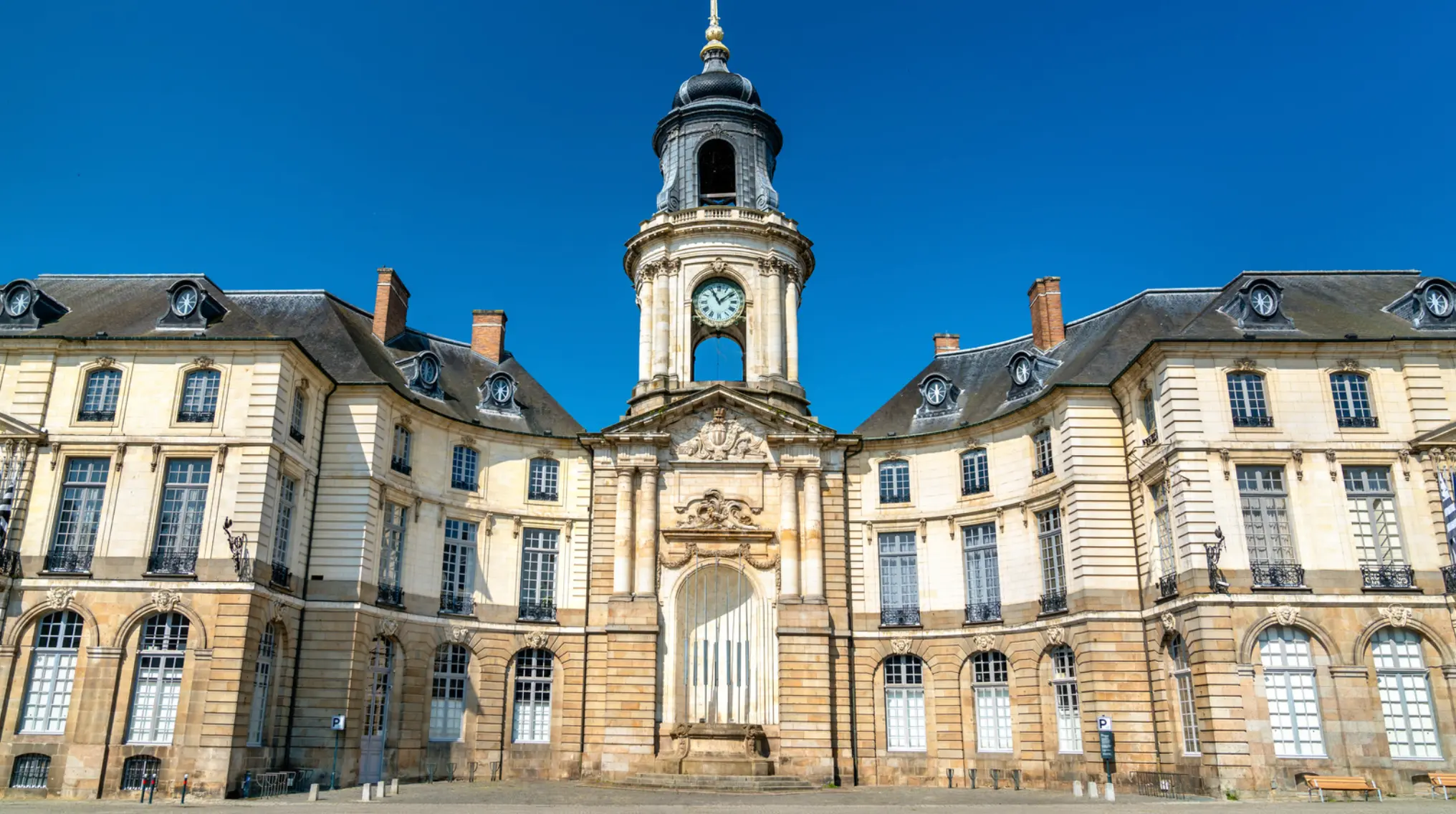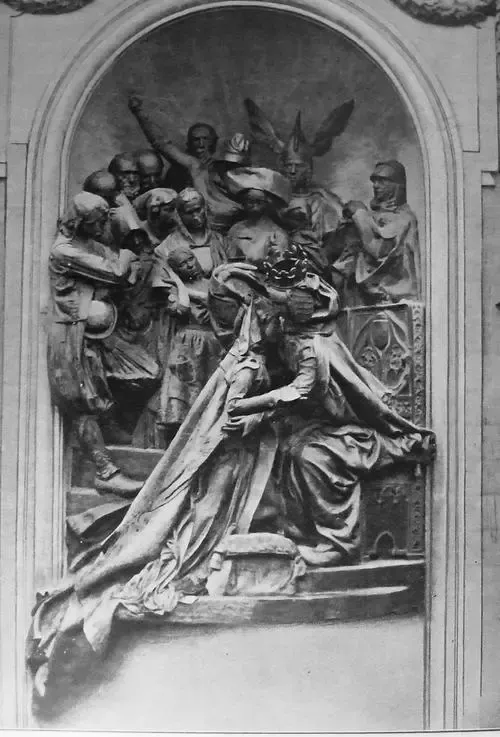- 🇩🇪 Deutsch
- 🇬🇧 English
- 🇪🇸 Español
- 🇫🇷 Français
- 🇮🇹 Italiano
- 🇵🇹 Português
- 🇨🇳 中文
50% off all Ciceru tours throughout October!Valid for the entire month of October when purchasing at least 2 tickets.
Get discount code
Why Is There a Big Empty Niche in the City Hall of Rennes?
A Tale of Fire, Revolution, and a Missing Piece of History
The City Hall: Rising From the Ashes Like a Phoenix
How a Devastating Fire Led to the Rebirth of Rennes

Rennes City Hall isn’t just a place where politicians shuffle papers and make decisions; it's a survivor. Its story starts with one of the most dramatic episodes in Rennes' history—the Great Fire of 1720. Picture this: a carpenter's shop, a bunch of folks having a bit too much fun, a domestic spat, and suddenly—boom! A lamp shatters, and the entire city goes up in flames. For a whole week, fire tore through the medieval streets like it had a grudge, leaving behind nothing but ashes and heartbreak.
But Rennes wasn’t about to give up. In the aftermath, King Louis XV sent his top architect, Jacques Gabriel, to rebuild the city from scratch. Out with the old chaotic medieval streets and in with grand squares and straight streets. The centerpiece of this new city was the Place de la Mairie, where the stunning City Hall still stands today. It's more than just a building; it's a symbol of Rennes’ spirit—knocked down but never out.
A Grand Makeover: Building the New Rennes
Jacques Gabriel's Vision of Order and Authority

Gabriel didn’t mess around when designing the City Hall. He went full-on Baroque, with two identical wings and a fancy clock tower in the middle. On one side, you’ve got the civil court; on the other, the administrative center. It’s like a big architectural hug wrapping around justice and governance.
But let’s get to the juicy part—the niche under that central clock tower. Today, it’s just a big, empty hole, but it wasn’t always that way. Back in the day, this niche was prime real estate for a statue of King Louis XV, the guy who helped bring Rennes back from the brink after the fire. It was all about giving props to the man in charge. But you know how history goes—things change.
The Revolution: Off with His Head (Well, Statue)!
When the French Revolution Came for the King

Fast forward to the French Revolution, when everyone was in a mood to, well, break things. The statue of King Louis XV had to go. The revolutionaries were all about overthrowing symbols of the monarchy, and that statue was no exception. So, they tore it down, leaving the niche awkwardly empty. It was like the City Hall suddenly had a missing tooth.
But wait, the niche wasn’t going to stay empty for long. A new sculpture was put in, this time showing the Union of Brittany with France. It featured Anne of Brittany kneeling in front of an allegorical figure of France. Sounds all nice and unifying, right? Well, not quite. This new addition sparked its own controversy and made the niche’s story even more complicated.
Nationalist Uproar: The Niche Becomes a Battlefield
A Symbol of Discord Between Brittany and France

Turns out, not everyone was thrilled with the whole 'Union of Brittany with France' idea. Nationalist sentiment in Brittany was not about to let this monument slide. To them, it was a symbol of oppression, not unity. So, in 1932, during the 400th anniversary of Brittany's union with France, things got heated—literally. A group of protesters decided that this sculpture was a 'monument of national shame' and tore it down. And just like that, the niche was empty again.
And there it remains, an empty spot right in the middle of the City Hall's grand façade. But don’t let that emptiness fool you—it's packed with stories. Every time you walk by, it's like the niche is whispering tales of fire, rebellion, identity struggles, and the eternal tug-of-war between past and present.
🍪 We use cookies to enhance your experience on our website. Here's how:
- Essential Cookies: these are necessary for our site to function properly and are always active.
- Optional Cookies: these allow us to monitor and improve our app's performance.
For more information, visit our Cookie Policy.
